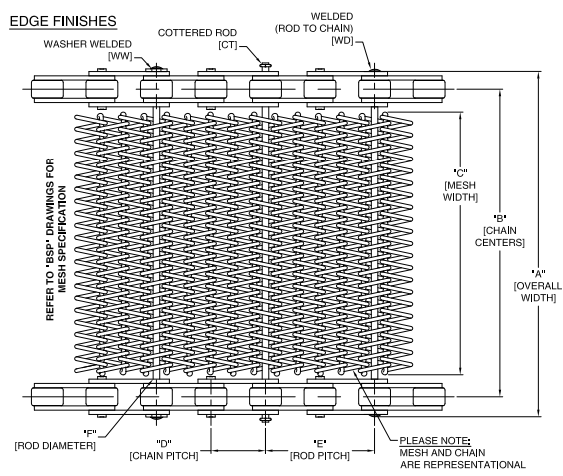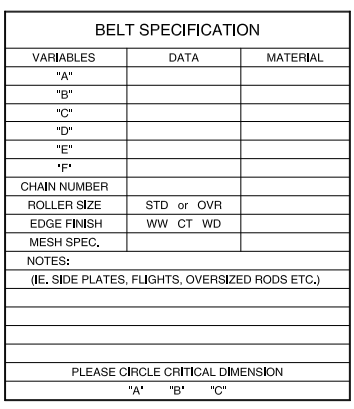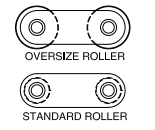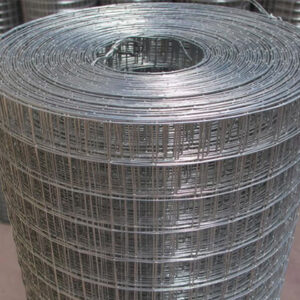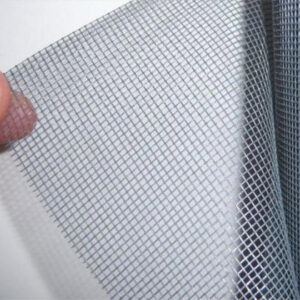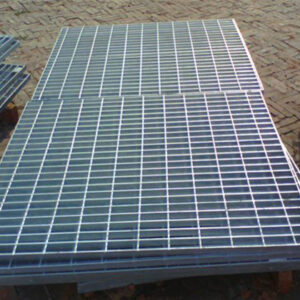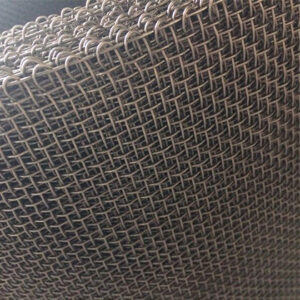1.Balanced Weave

Manufactured using left&right hand spiral connected with a crimped connecting rod to creat a balanced weave that is straight tracking. This weave is designated with the letter “B”.
Balanced weave is the most common weave used in general friction driven applications, positive driven mesh, and chain driven applications. Often used for architectural mesh and safety curtains. Available any material.
B-72-24-16
B=balance weave designation
72=72loops of wire per foot width
24=24spirals connected in a foot of length
16=gauge of wire(.062”diameter)

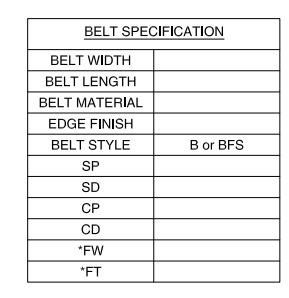
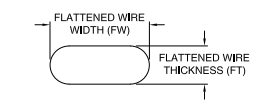
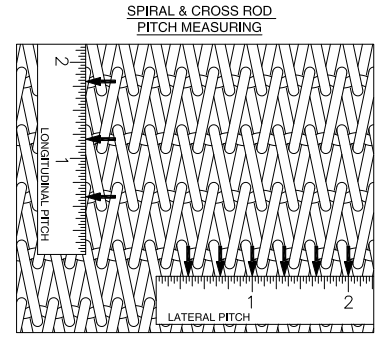
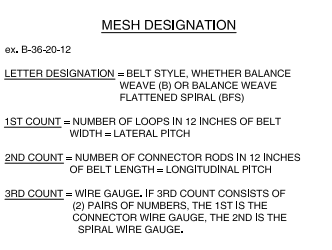

2.Double Balanced Weave
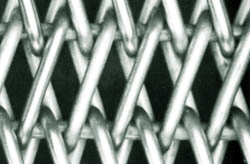
A modified variation of balance weave, using two inter-woven spirals. Two 12 pitch spirals are woven together to form a 24 pitch belt. Awailable in any material.
Most commonly used in elevated temperature applications for Sintering, Brazing and Annealing.
DB-24-10-6-8
DB=double balance
24=24 loops of wire per foot width
10=10spirals connected in a foot of length
6=6 gauge connecting pin(.192” diameter)
8=8 gauge spiral wire(.162” diameter

3.Conventional Weave
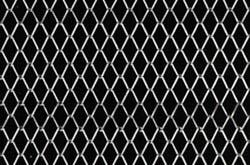
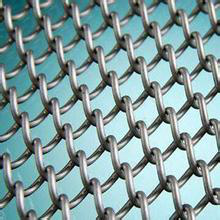
Also referred to as chain link mesh since it is woven in the same manner as chain link fencing. All spirals are of the same direction and are woven together without the use of the connecting rods.
Generally used in chain driven applications where exceptional drainage of open area are required. Awailable in any material.
CLK-24-24-16 or 1/2”x16 gauge conventional weave
4.Compound Balanced Weave (Cordweave)
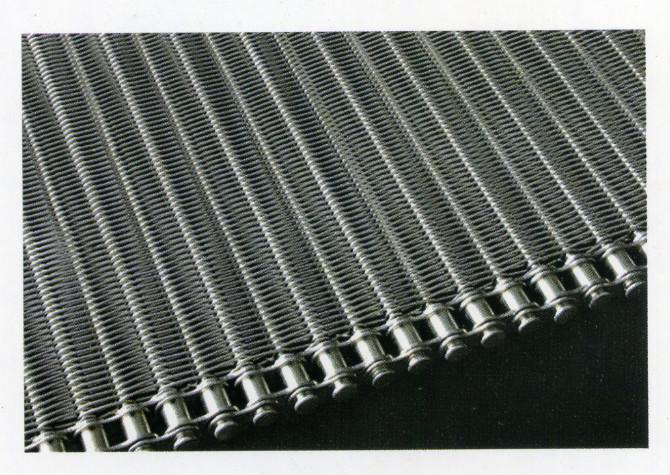
A variation of the balanced weave, consisting of alternating left&right hand spirals compressed to create a very tight weave with a flat surface. Generally assembled with a straight connecting rod, but is available in limited specifications with a crimped connecting rod.
Common mesh used for small fasteners, catalyst and baking bands. Also used as furnace curtains. Available in any material.
CB3-30-72-14
CB=compound balance
3=3 cross rods per spiral
30=30loops per foot width per spiral
72=72 spirals per foot length
14=14gauge wire(.080” dia.)
5.Flat Wire Belting

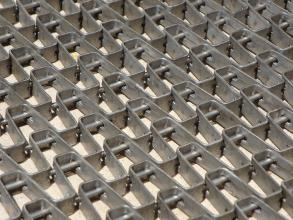
Cost effective open design belting using flat strip to form spirals in a rectangular opening joined with straight pins. Available in standard duty(3/8” thick) and heavy duty(1/2” thick) series. Available meshes are: standard duyt 1×1, 1/2×1, 1/2×1 modified, 1×1 radius, 1/2×1 radius.
Heavy duty 1×1, 1/2×1, 1/2×1 modified, 1x1radius, 1/2x1radius.
Flat wire belting is available in galvanized, high carbon and stainless steel. A complete line of sprockets, shafts, flights and attachments are available.
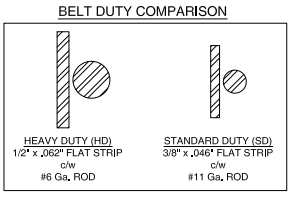
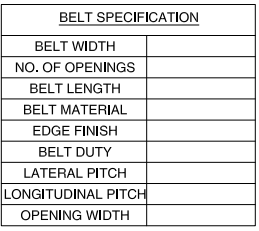
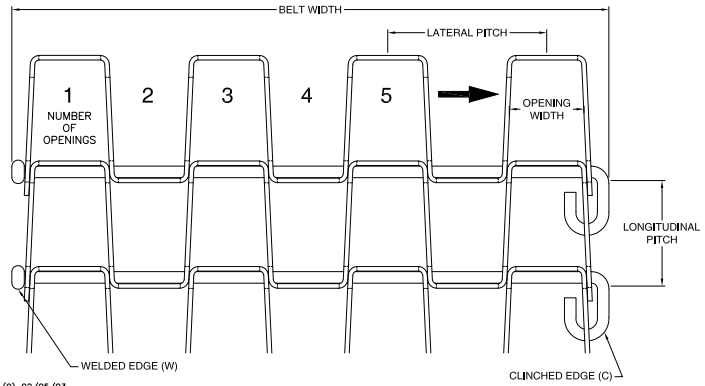
6.Flat-Flexing Belting
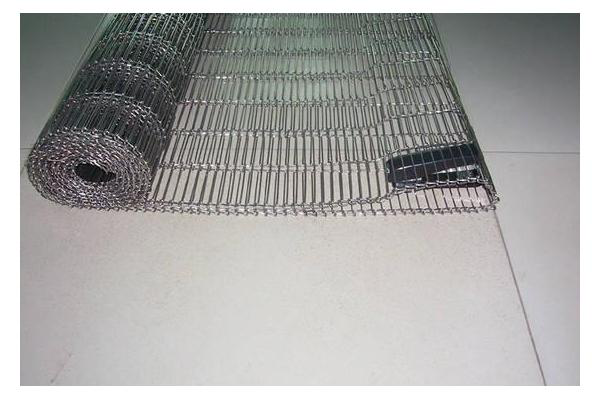
Light weight&open construction makes this belt popular in baking and food processing. Positive driven belting manufactured from stainless steel and music wire. This belt is manufactured in the following standard meshes:
72x.035”, 48x.050”, 32x.082”, 24x.092”,
72x.050”, 42x.050”, 27x.050”, 15x.092”
54x.035”, 42x.062”x 24x.072”
Also available in metric pitch. Complete line of sprockets, blanks, shafts, turn belts and complete conveyor units.
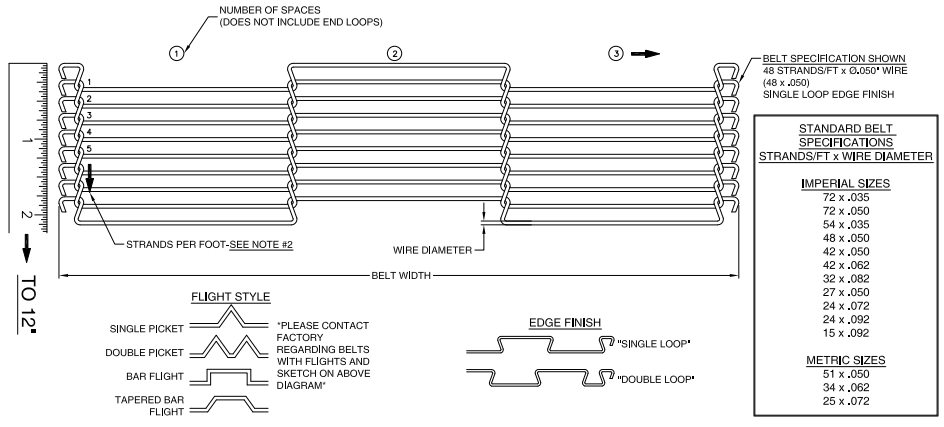
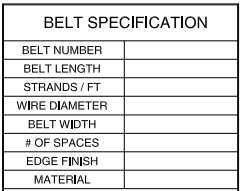
7.Chain Drive Belting
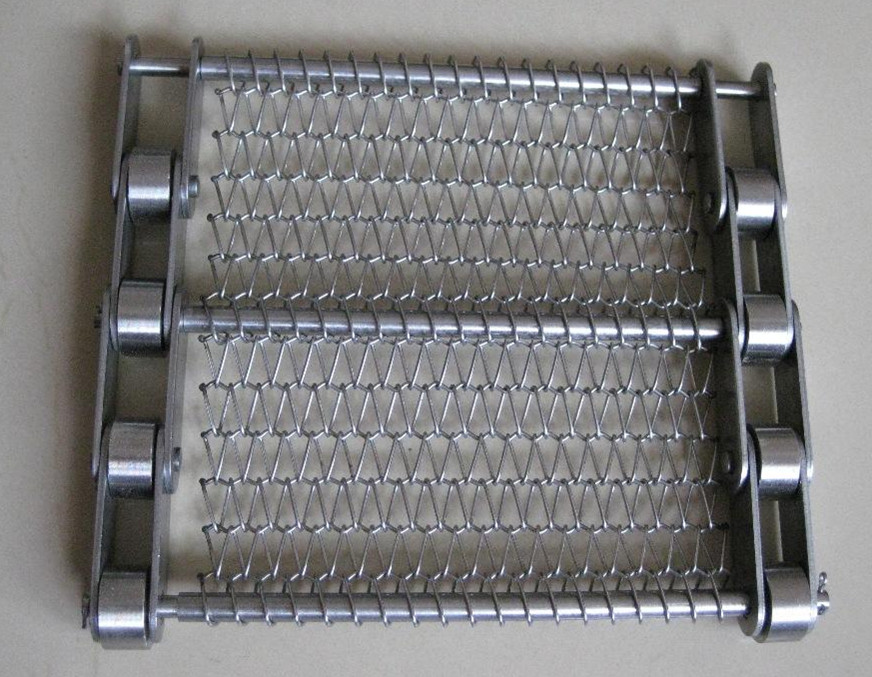
Mesh belting with chain attached to each edge for positive drive. The chain can be attached by rods that pass through the mesh or with channel/bar supports that are bolted/welded to the chain. The construction method used in based on the capacity required and the mesh will be determined by the smallest part size. Most common meshes are balanced weave mesh woven to accommodate the support spacing.
Common applications are ovens, quench tanks, wahers, fryers, greezers and any application that requires posivive drive to eliminate any potential tracking problems.
